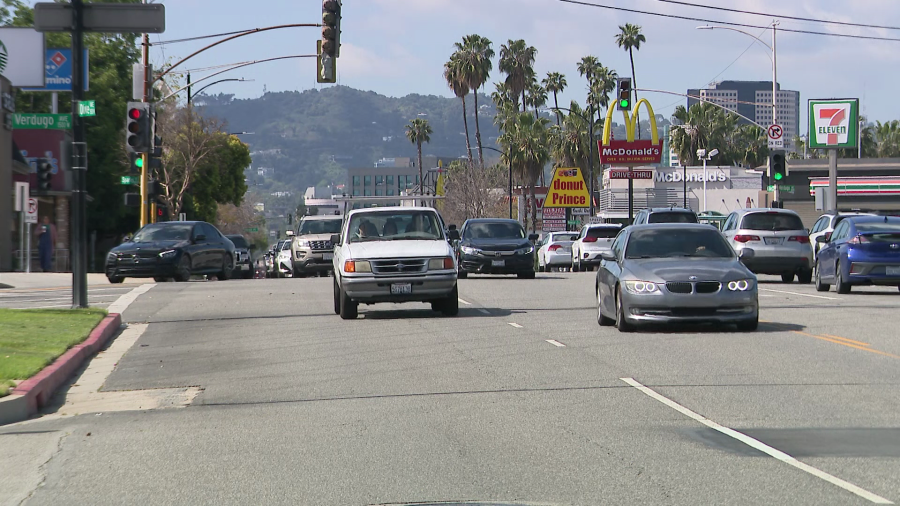An LA Metro project to connect North Hollywood to Pasadena via a dedicated bus route is facing opposition from a group that claims it will only cause further traffic congestion in a vital corridor through Burbank.
Metro says the bus rapid transit line (BRT) would better connect the San Fernando and San Gabriel valleys with service to North Hollywood, Burbank, Glendale, Eagle Rock and Pasadena.
Bus rapid transit is faster moving and more reliable than traditional bus routes due to its use of exclusive lanes and its given priority over vehicles at traffic lights. BRT lines are similar to light-rail systems, but come with a reduced cost and less need for dedicated infrastructure.
Much of the 18-mile system would feature those exclusive busways that would operate along surface streets, necessitating the need for some reimagining of existing roadways.
It’s a specific strip that cuts through Burbank’s main thoroughfare that has led to a group coming forward to oppose the project.

Olive Avenue, which currently utilizes two lanes of vehicle traffic on both sides of the road, would be one of those roads that would need retooling to accommodate the new bus rapid transit line. Metro is proposing eliminating one lane of vehicle traffic in both directions.
For Vision Burbank, a political action group comprised of city residents, that’s a nonstarter.
“We think one lane is insane,” said David Donahue, president of the group. “Show and justify how you’re going to be able to rationalize and justify taking away a full lane of traffic in Burbank.”
The group claims that reducing lanes on Olive Avenue would lead to worsened traffic and increased commute times, a position Metro disagrees with.
Metro has previously conducted its own traffic studies and said it didn’t believe the reduced vehicle lanes would have a dramatic impact on traffic along Olive Avenue, countering that it would instead remove vehicles from the road by making public transportation more convenient in an area with sparse coverage.

Donahue and Vision Burbank say they encourage public transportation, but believe there won’t be enough usage of the BRT to justify cutting vehicle lanes in half and argued businesses would be adversely affected.
Instead, they want buses to operate in “mixed-flow” along with other vehicles.
But for some people who commute along Olive Avenue, the status quo doesn’t seem like anything worth maintaining.
“There’s more people, there’s more traffic. I’ve been living here for 15 years and now the traffic is crazy,” said Eduardo Shilinsky, who said he was in favor of bringing bus lanes to Olive Avenue. “It will be better if they make something.”
Vision Burbank and other opponents of the current BRT plans have been circulating a petition and protesting outside Burbank City Hall to show their opposition to city leaders about the proposed changes to Olive Avenue. Supporters are also expected to be out in full force.
The project is currently in its preliminary design stages and Metro is expected to select a contractor for the project in April with construction to begin in 2025, according to Los Angeles Daily News.





















